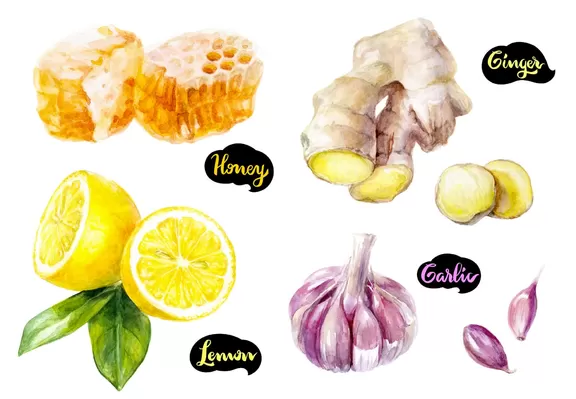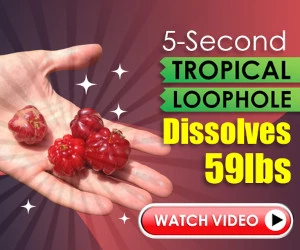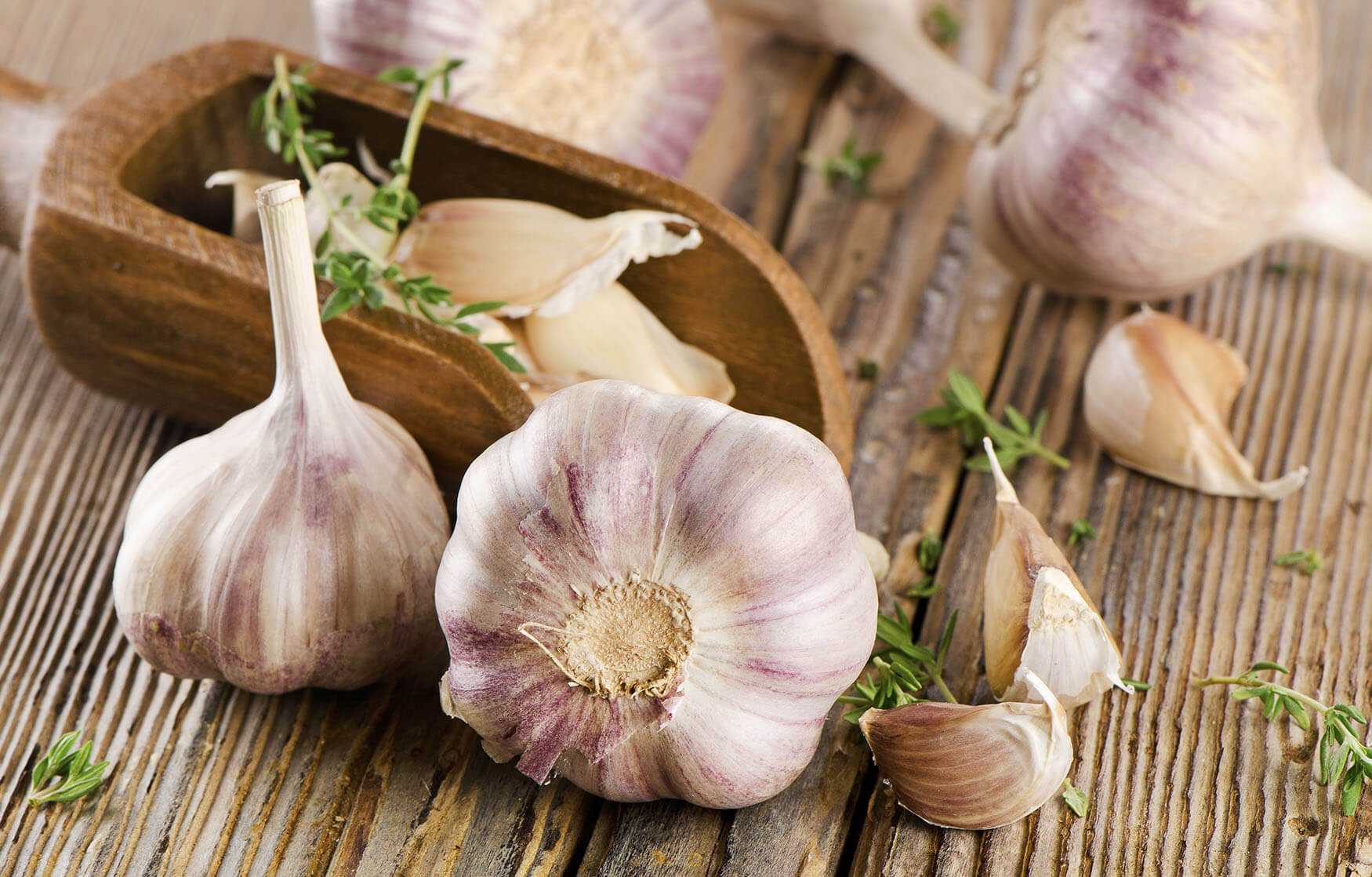
Yes, garlic does kill many bacteria; and can kill or inhibit all of the most common bacterial pathogens on earth (we will address various studies that prove this later on in this article). It is a fact of history that garlic has been used by many ancient civilizations as a medicine. And, you can still use this herb to fight bacterial infections today! It is a great choice due to its efficacy and its safety—garlic is literally safe to eat!
So what kind of bacteria is garlic capable of killing? Probably a very wide range; and it might be able to be considered a broad-spectrum natural antibiotic. The problem with proving this is that research tends to focus on bacterial species of relevance; i.e., those with medical or financial ramifications. So, until medical knowledge grows significantly, we may be only able to surmise about the totality of garlic’s antibacterial properties.
And, let's face it, what most people are concerned about are the common bacterial pathogens that cause illness. And, there is a large amount of research to verify garlic’s ability to kill or inhibit the bacteria that cause illness.
One study that looked at several pathogenic bacteria, and examined how they would react to garlic, was published in the World Journal of Microbiology and Biotechnology [19.6 (2003): 565-569](source 1). All of the strains of bacteria were resistant to some commonly used antibiotics. The following bacteria were examined by this research:
- Bacillus cereus (B. cereus), which causes food poisoning and can result in vomiting or diarrhea.
- Staphylococcus aureus (S. aureus), this bacteria can cause a wide array of infections. Skin infections like cellulitis (which can lead to gangrene), food poisoning, bloodstream infections (Bacteremia), septic arthritis, and toxic shock syndrome. Find out more on staph infections from Mayo Clinic’s article.
- Clostridium perfringens (C. perfringens), a common cause of food poisoning. The CDC estimates these bacteria cause nearly 1 million illnesses in the United States every year.(source 2)
- Escherichia coli (E. coli), a cause of food poisoning. Symptoms of an infection are bloody diarrhea, stomach cramps, and vomiting.
- Salmonella, a cause of food poisoning. Most salmonella infections can be considered “stomach flu.”
- Shigella, which causes intestinal infections. The primary symptom of this type of infection is diarrhea, which can be bloody. Shigella is highly contagious.
The study used a water based garlic extract. To produce this extract garlic cloves were deskinned, chopped, and then blended with distilled water. The resulting mixture was centrifuged. The supernatant fluid (the fluid that settled on top after centrifuging) was then taken and filtered. This fluid was the extract, and was used within one hour of being produced.

Comprehensive Herbalist School
Dr. Patrick Jones, founder of the HomeGrown Herbalist School of Botanical Medicine has been a practicing veterinarian for over 25 years. He is also a clinical herbalist and traditional naturopath.
Kevin Harrington, Original Shark from ABC’s Shark Tank, stands behind Dr. Patrick Jones and HomeGrown Herbalist.
Learn More
Comprehensive Herbalist School
Dr. Patrick Jones, founder of the HomeGrown Herbalist School of Botanical Medicine has been a practicing veterinarian for over 25 years. He is also a clinical herbalist and traditional naturopath.
Kevin Harrington, Original Shark from ABC’s Shark Tank, stands behind Dr. Patrick Jones and HomeGrown Herbalist.Learn More
The study found that the following minimum inhibitory concentrations (MICs) of garlic for these pathogens (note that MIC is the lowest amount of a substance that will stop the growth; i.e., inhibit; of an organism):
- B. cereus: MIC of 6 to 10 mg / ml
- S. aureus: MIC of 30 to 40 mg / ml
- C. perfringens: MIC of 20 to 30 mg / ml
- E. coli: MIC of 10 mg / ml
- Salmonella: MIC of 40 to 100 mg / ml
- Shigella: MIC of 10 to 40 mg / ml
Given this, and the research we will discuss, it is safe to conclude that garlic is antibacterial. And, garlic is a food you can eat, which makes it one of the safer natural medicines. Garlic should be a staple of any home natural medicine cabinet. Just make sure you use extra precaution if you use the essential oil of garlic; as this is of course not the same as using raw garlic. Essential oils are often very dangerous if ingested!
Dr. John Herzog (MD)
Dr. John Herzog, a "survival surgeon" from Maine explains what home remedies work best in a crisis situation.
This may be important in the event you require first-aid or are in an emergency situation without easy access to a hospital. Dr. John Herzog has assembled a large collection of home remedies for such scenarios.

The Most Common Bacterial Pathogens
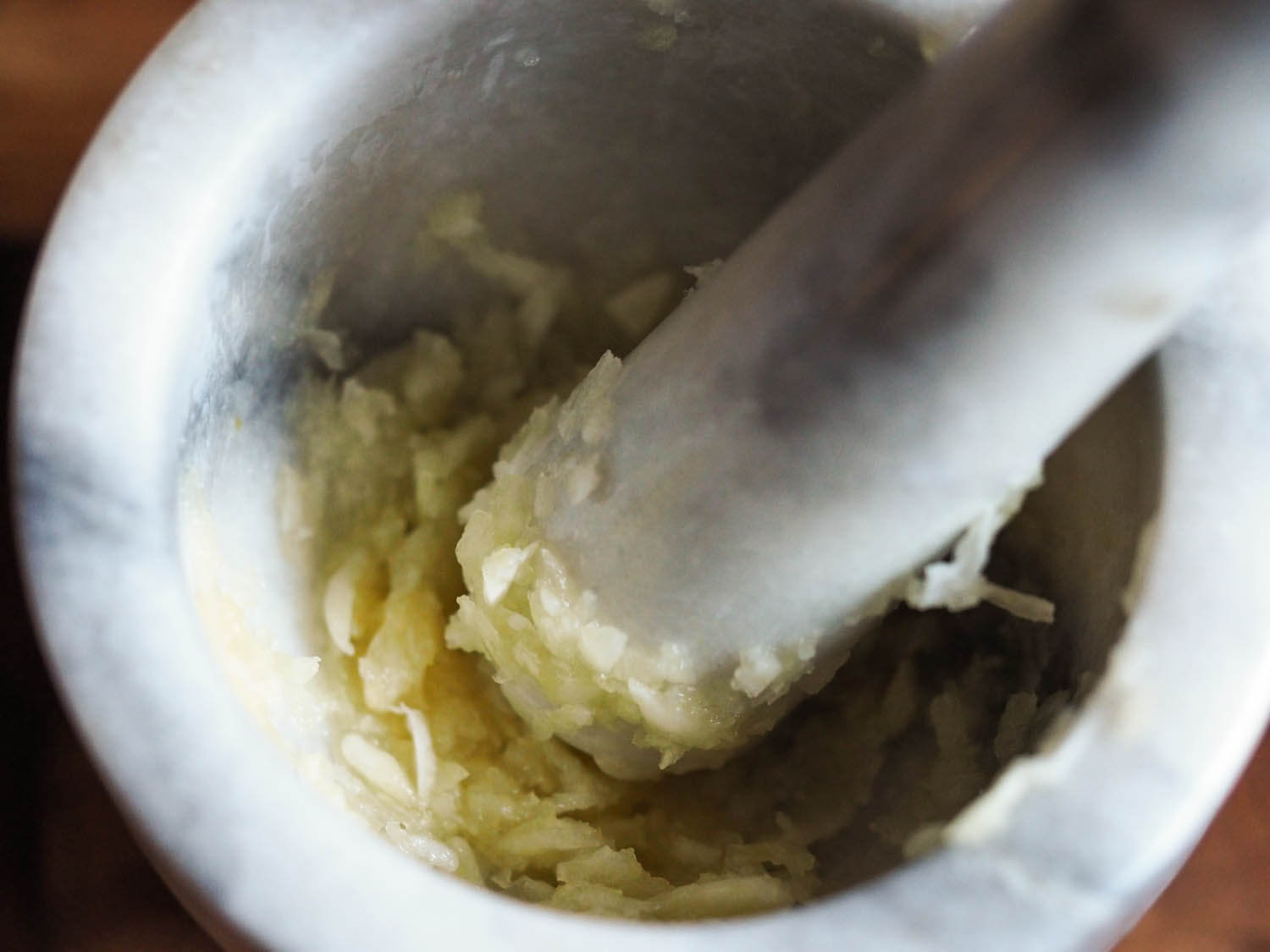
According to the U.S. government’s FoodSafety.gov website (source 3), the most common bacterial pathogens responsible for the most illnesses, hospitalizations, or deaths in the United States are:
- Campylobacter
- Clostridium perfringens
- Escherichia coli, also known as E. coli
- Listeria
- Salmonella
Garlic’s Affects on Campylobacter
One study that looked at how garlic would affect Campylobacter was published in the journal Applied and Environmental Microbiology [77.15 (2011): 5257-5269](source 4). In this study Campylobacter jejuni (C. jejuni) was studied for how garlic would affect it. The study relates that C. jejuni can survive outside of a host for a prolonged period of time; and, this bacteria is now considered the most prevalent cause of bacterial food-borne sickness in the world. C. jejuni infections can cause diarrhea, fever, and abdominal cramps.
The study made a garlic concentrate by blending the garlic, centrifuging and separating the supernatant fluid (the fluid that was on the top after centrifuging), and then straining through filters. This concentrate was added into sterile saline water or into nutrient broth. The garlic concentrate was diluted to concentrations of 0, 6.25, 12.5, 25, 37.5, 50, 75, and 100 microliters per milliliter (µl/ml).
This is a fairly weak concentration. To better understand these concentrations, consider 100 µl/ml. 100 microliters is 0.1, or 10%, of a milliliter. So the strongest concentration used, which was 100µl/ml, was just a 10% concentration of garlic! Thus, the study may not accurately reflect the effect on an infection when using a pure puree of garlic or eating a lot of garlic. But, it should show you what even a small amount of garlic can do to this common food borne illness pathogen!
The nutrient broth provided sustenance for the C. jejuni; whereas the saline water would offer no nutrient value. In addition to different liquids, the bacteria was tested against garlic at different temperatures.
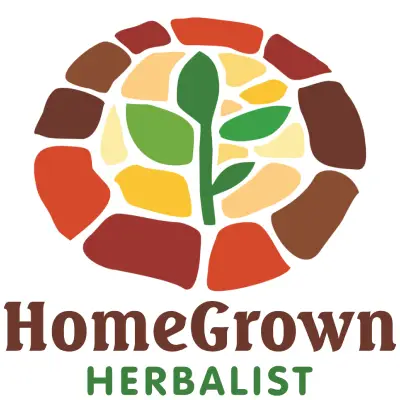
HomeGrown Herbalist Herb Shoppe
Owner of HomeGrown Herbalist Dr. Patrick Jones is a practicing veterinarian, Clinical Herbalist, and traditional naturopath. He owns and operates Fairview Animal Hospital in Buhl, ID.
Their herb shoppe provides herbs, essential oils, and tools. If you have some time, check it out!
Learn More
HomeGrown Herbalist Herb Shoppe
Owner of HomeGrown Herbalist Dr. Patrick Jones is a practicing veterinarian, Clinical Herbalist, and traditional naturopath. He owns and operates Fairview Animal Hospital in Buhl, ID.
Their herb shoppe provides herbs, essential oils, and tools. If you have some time, check it out!Learn More
The study found that for C. jejuni in saline water, 25 microliters / milliliter of garlic extract totally killed all the C. jejuni bacteria in 5 hours at a temperature of 35°C. When the bacteria was allowed to grow in nutrient broth, the study found that 25 microliters / milliliter of garlic concentrate was able to kill all the C. jejuni after the first 24 hours of exposure.
Thus this study shows that a very weak concentration of garlic is able to kill the common infectious species Campylobacter: C. jejuni.
Garlic & Clostridium perfringens
A study showing how garlic will affect C. perfringens was published in the journal Microbial Ecology in Health and Disease [12.2 (2000): 81-84](source 5). The study found the minimum inhibitory concentration (MIC) and the minimum bactericidal concentration (MBC; which is the smallest amount that will kill the bacteria) of garlic against several different species of bacteria. C. perfringens was one of the species tested.
The study unfortunately described the MIC and MBC in terms of micrograms of thiosulfinate per milliliter. According to the study:
Antibacterial activity and reducing activities of garlic extracts is attributed to the presence of thiosulphinates which include diallyl sulphide, diallyl disulphide and allyl methyl sulphide. Their disruption of cell components and there ability to block enzyme pathways have been implicated in bacterial inhibition…
Microbial Ecology in Health and Disease [12.2 (2000): 81-84]
Some of the thiosulfinates are probably formed from the decomposition of allicin, which breaks down very quickly. When allicin breaks down, diallyl disulfide and trisulfide are produced.
Pierre Brat, in his 2008 book Improving the Health-Promoting Properties of Fruit and Vegetable Products (pp. 248-278)(source 6), cites a study that found the amount of thiosulfinates in fresh garlic. This cited study compared garlic from different origins and reported from 2.67 mg to 10.15 mg of total thiosulfinates per gram of fresh garlic weight. The primary allicin compounds were also found for fresh garlic and ranged from 1.28 to 6.63 mg/g.
Thus, since there is 2.67 mg to 10.15 mg of thiosulfinates in one gram of fresh garlic, and there are 1000 micrograms in 1 milligram, this gives you a better idea of the MIC and MBC found in the Microbial Ecology in Health and Disease [12.2 (2000): 81-84](source 5) study. The following values are the MIC and MBC for C. perfringens found by this study:
- MIC of garlic against C. perfringens: 1.6 micrograms of thiosulfinate per milliliter
- MBC of garlic against C. perfringens: 3.2 micrograms of thiosulfinate per milliliter
So in parts per million (ppm), fresh garlic has 2,670 to 10,150 ppm of thiosulfinates. The MIC therefore is 1.6 ppm, and the MBC is 3.2 ppm. Thus fresh crushed garlic should kill C. perfringens.
Garlic VS. E. coli
A study that found the MIC and MBC for garlic against E. coli was published in the Bayero Journal of Pure and Applied Sciences [6.2 (2013): 45-48](source 7). The results of this study may not fully illustrate the antimicrobial power of garlic as all the allicin was possibly decomposed by the time the garlic was tested on E. coli.
The study prepared their garlic extract from cloves of garlic purchased at a market. The garlic was skinned, washed, and dried. The garlic was then chopped to pieces and further dried for three days. After the drying, the garlic was smashed into smaller granules. The garlic was then mixed with either water or methanol. The material that was gathered from this process was allowed to dry and then was used in the tests against E. coli.
The study found that MIC for garlic against E. coli ranged from 50 to 100 mg / ml. The MBC for both water and ethanol garlic extract was 200 mg / ml.
Garlic’s Inhibition of Listeria
A study, published in the Journal of Applied Microbiology [84.2 (1998): 213-215](source 8), determined the inhibitory power of garlic against Staphylococcus aureus, Salmonella typhi, Escherichia coli and Listeria monocytogene. The study found the MIC that caused an 80% inhibition in growth (MIC80).
The study used fresh garlic bulbs from a local market. The garlic was then taken apart and the skin removed. The garlic was then sterilized via washing. Finally, the garlic was ground in a mortar and pestle to be used in the study.

Comprehensive Herbalist School
Dr. Patrick Jones, founder of the HomeGrown Herbalist School of Botanical Medicine has been a practicing veterinarian for over 25 years. He is also a clinical herbalist and traditional naturopath.
Kevin Harrington, Original Shark from ABC’s Shark Tank, stands behind Dr. Patrick Jones and HomeGrown Herbalist.
Learn More
Comprehensive Herbalist School
Dr. Patrick Jones, founder of the HomeGrown Herbalist School of Botanical Medicine has been a practicing veterinarian for over 25 years. He is also a clinical herbalist and traditional naturopath.
Kevin Harrington, Original Shark from ABC’s Shark Tank, stands behind Dr. Patrick Jones and HomeGrown Herbalist.Learn More
The study found that a 8.8% concentration of garlic would induce an 80% inhibition in the growth of Listeria monocytogene. So, the study shows that garlic can indeed fight Listeria. The following MIC80 values were also found by the study for garlic:
- E. coli: 3.95%
- Salmonella typhi: 7%
- Staphylococcus aureus: 5%
The chart below, taken from the study, shows the inhibition garlic caused on other pathogens in concentrations up to 10%. The numbers indicate the optical density, how much growth could be observed visually via the use of an instrument.
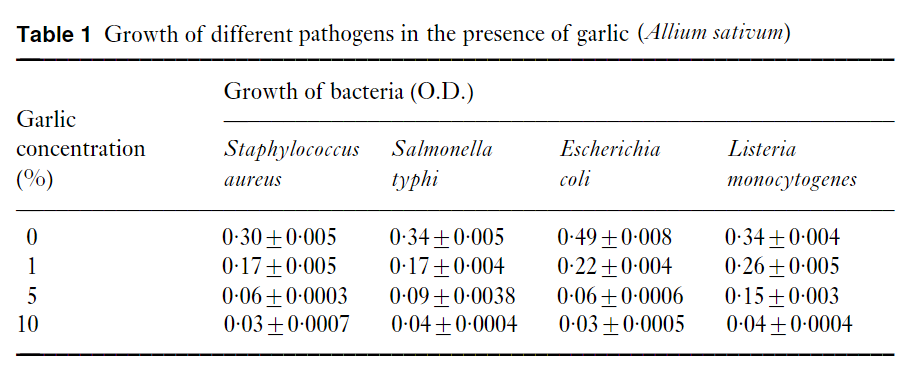
Garlic’s Effect on Salmonella
A paper published in Knowledge and Health [2009, Vol. 4, No. 2; Pg. 6-9](source 9) found the MIC and MBC of garlic powder extract and garlic tablets against Salmonella typhimurium (S. typhimurium). The study found that MIC for the garlic powder extract againstS. typhimurium was 12.5mg / ml. The MIC for the garlic tablet against this same bacteria was 40mg / ml. The MBC of the garlic powder extract against S. typhimurium was 25mg / ml; and, for the tablet the MBC was 80mg / ml.
Another study, published in LWT Food Science and Technology [153 (2022): 112439](source 10), looked at how garlic would affect two types of Salmonella enterica. The study also tested garlic on strains of probiotic bacteria, namely Lactobacillus plantarum (L. plantarum) and one strain of Lactobacillus paracasei.
The study found that 125 mg/ml (12.5%) of garlic extract would totally stop the growth of both types of Salmonella enterica. Yet, at this same 12.5% concentration of garlic extract, the Lactobacillus strains were not inhibited much at all. Even at a concentration of 750 mg/ml (75%) garlic extract after 36 hours of incubation, the Lactobacillus still grew a small amount.

HomeGrown Herbalist Herb Shoppe
Owner of HomeGrown Herbalist Dr. Patrick Jones is a practicing veterinarian, Clinical Herbalist, and traditional naturopath. He owns and operates Fairview Animal Hospital in Buhl, ID.
Their herb shoppe provides herbs, essential oils, and tools. If you have some time, check it out!
Learn More
HomeGrown Herbalist Herb Shoppe
Owner of HomeGrown Herbalist Dr. Patrick Jones is a practicing veterinarian, Clinical Herbalist, and traditional naturopath. He owns and operates Fairview Animal Hospital in Buhl, ID.
Their herb shoppe provides herbs, essential oils, and tools. If you have some time, check it out!Learn More
This seems to lend evidence to the thought that garlic will not damage helpful probiotic bacteria when ingested; while at the same time it is able to inhibit and possibly kill pathogenic bacteria. The following quote, taken from the study, is part of the author’s conclusion:
The results of the study indicated that at a certain concentration (12.5%), the garlic extract improved the growth of Lactobacillus strains while its combination showed synergistic antimicrobial activity against Salmonella. In the present era of growing antimicrobial resistance, alternative antimicrobial therapy such as the use of probiotics and its combination with easy available herbs such as garlic extract can offer potential solutions to combat against common enteric [relating to or occurring in the intestines] pathogens such as Salmonella species.
LWT [153 (2022): 112439]
Claire Goodall’s Amazing Guide
Clair Goodall is a bee-obsessed, natural medicine convert from Minnesota (USA). And, she does keep bees!
Clair has created 350+ page book documenting how to replace the toxic products and medications in your home with healthier, all-natural alternatives.

Garlic’s Use in Antiquity
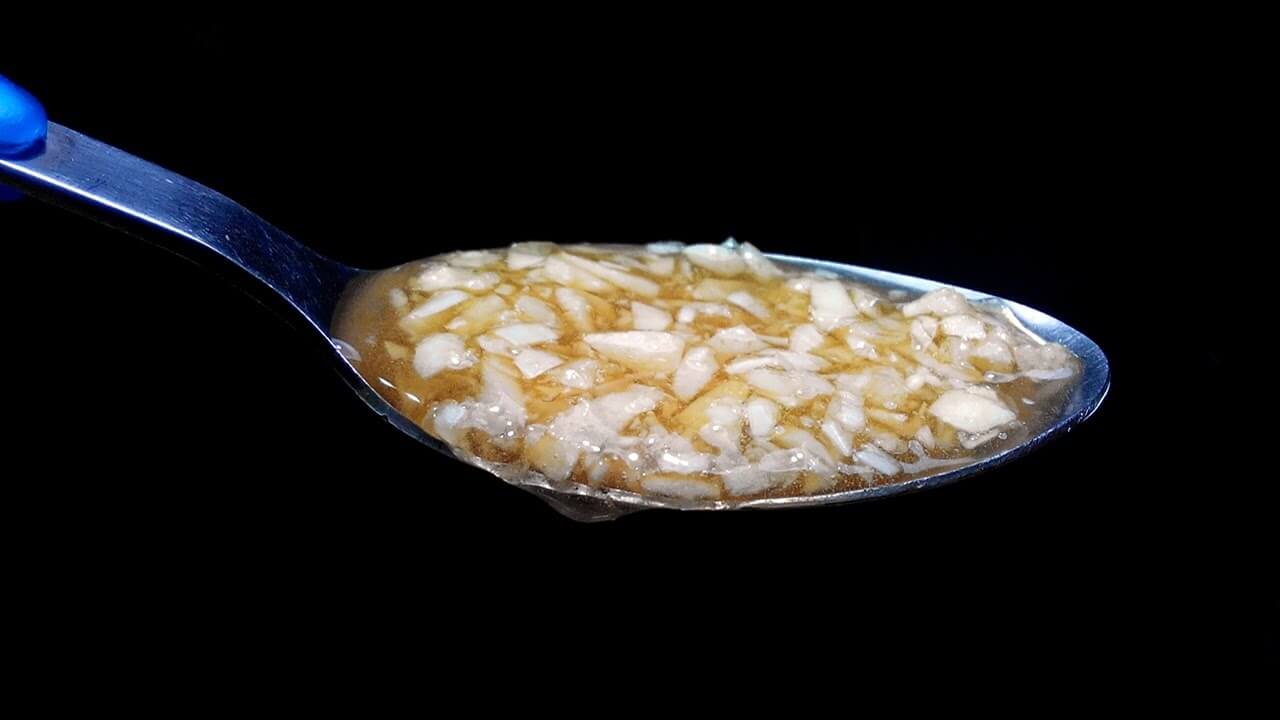
A study, published in Pharmacognosy Reviews [4.7 (2010): 106](source 11), discussed the historic use of garlic. According to this exposition of the history of garlic, this herb is native to Middle Asia. There are quite a few different beliefs to the exact origin of garlic. Yet as far back as 2600 BC Sumerians were using garlic medicinally. One thought is that the Sumerians brought garlic into China; and subsequently it was taken to Korea and Japan. Yet, some historians feel that garlic actually came from China.
In China, starting around 2700 to 2600 BC, garlic was possibly one of the most utilized remedies. Because garlic has heating and stimulating effects, the Chinese considered it to be "yang" according to the "yin / yang" concept. Possibly also due to the stimulating effects, the Japanese did not include garlic in the Bueddhist tradition.
Another ancient civilization that utilized garlic was ancient Egypt. Garlic was possibly one of the most used natural remedies in early Egyptian medicine. As Egypt rose in power and economic prowess they began seeking medicinal plants with strong ability from the East. The use of garlic may then have taken second stage to other medicinal herbs, leaving it to be mostly used by slaves.
The ancient Egyptians gave garlic as a food to their slaves to improve their strength and help them do more work. The Old Greek historian Herodotus stated: "Inscriptions on the plates of the Egyptian pyramids tell us how much their builders used the garlic for this vegetable, 1600 talents of silver were spent." The heavy common talent, used later in the Bible's New Testament, was 58.9 kg (129 lb 14 oz).
Suffice it to say, there is a vast array of history documenting garlic's use as a medicine. Ancient civilizations relied on the herb to keep them in health; and, it can still be used today for the same purpose!
Garlic’s Side Effects & Contraindications
There are some cautions you should be aware of when it comes to taking garlic. Fortunately, Herbsey has an article that provides a detailed summary of these side effects. You can read it (maybe just the short summary if you don’t have time!) here: Side Effects of Taking Garlic.
Generally you do not have to worry too much when taking a few cloves of garlic a day. The most common, and likely side effect, is having bad breath or bad body odor. But, if you use it on your skin, you should dilute the garlic, or use it with caution. This is because garlic can cause chemical burns.
Additionally, garlic may interact with blood thinners and drugs used to treat HIV. Also, garlic may prolong bleeding time and should be avoided before surgery. Again, the article has a more comprehensive explanation.
About the Author
Nick Gross is a natural medicine enthusiast who has been researching and writing about natural medicine since 2008. Nick is primarily a web developer, but also researches and authors written and video content about natural health. Nick has a bachelor’s degree in Management Information Systems from the University of Northern Iowa.
More on Nick GrossImportant Disclosures & Disclaimers
It is important to use the information you find on Herbsey.com in the right way. Also for legal reasons, these disclaimers and disclosures are necessary. For further information about each, feel free to click the link provided to the page on this website that provides more information.
Medical Disclaimer
The information on this website is not a prescription for anyone. This information is for informational or educational purposes only, and is not a substitute for professional medical advice or consultations with healthcare professionals.
Advertisement Disclosure
Some of the links provided on this article and website are affiliate links. If you purchase a product after clicking on these links, Herbsey.com will earn a commission. Herbsey.com promotes various products through advertisement and text links. For more information: Our Advertisements.





